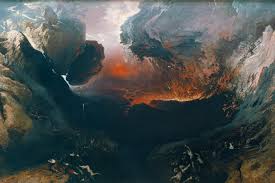Ae – The Use of Symbols in the book of Revelation
The Use of Symbols in the book of Revelation

Just because I believe that the book of Revelation should be interpreted literally, it does not mean that many symbols are not used. A literal view takes words as they are, unless there is something in the text indicating that it should be taken some way other than literally. And there is symbolic language in this book. The existence of these symbols has led to two extremes. One extreme states that these symbols show that this book cannot be understood and must simply be interpreted in terms of a general conflict between good and evil, the good winning out in the end. Beyond this, they say the book is not to be understood in any great detail. Thus, this view has opened the book up to a wide range of criticism and attacks from the enemies of the faithful.
The second extreme states that the symbols are used for unchecked speculation, sensationalism and all kinds of guesswork in trying to interpret them in terms of current events. Such speculation has resulted in far-fetched interpretations, and changes are made as current events unfold. This view has also led to the setting of dates. In this area, the book of Revelation has suffered at the hands of its friends.
But there is a balance between these two extremes. While the Bible does use many symbols, it is consistent in its usage of those symbols. A specific symbol will mean the same thing throughout the TaNaKh and the B’rit Chadashah in the vast majority of cases. For example, Revelation has no direct quotes from the TaNaKh, but it has about 550 references to it. Only the last two chapters of Revelation regarding the Eternal State have information that is entirely new.
For this study, the symbols will be examined in accordance with the Golden Rule of Interpretation. While recognizing the existence of the symbols, there will be no resorting to guesswork. Rather, we will study Revelation on the premise that all the symbols in it are explained elsewhere, either in a different part of Revelation itself, or somewhere else in the Bible. In other words, we will let Scripture interpret Scripture. Their meanings will not be determined by speculation.5




